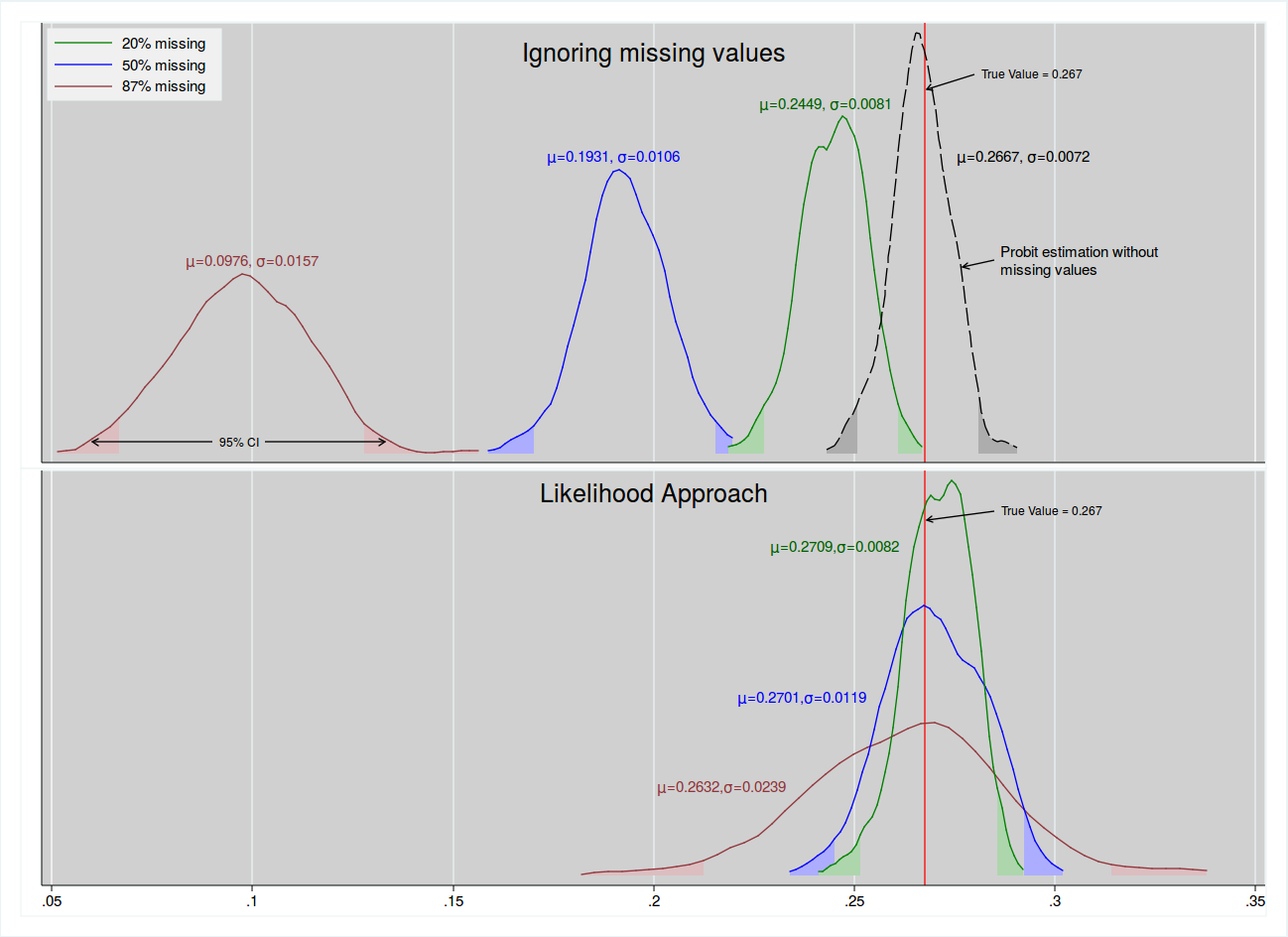Are daughters of working mothers more likely to work? Was this also the case before the increase in female labor force participation?
By Jesus M. Carro, Matilde P. Machado and Ricardo Mora.
Based on research by Jesus M. Carro, Matilde P. Machado and Ricardo Mora.
Nowadays, we see working women everywhere, and no one is surprised anymore to see a policewoman, a woman driving a bus, or even piloting a plane. What today is normal was not always the case. Throughout history, although women have always taken the burden of household chores and worked the land, they were not always engaged in paid work. In the United States, for example, female labor force participation (FLFP) was around 18:9% in 1890, 29:5% in 1950, and around 60% in 1999. The male-female participation gap by the end of the 20th century was 12:9%, with most women combining family and work (Bureau of Labor Statistics). A minority’s decision at the beginning of the 20th century is now the mode. Similar patterns are observed in other OECD countries, including Portugal, the focus of our research. According to the Portuguese census, in 1911, around 37% of women between 15—65 years old had a profession. By 1975, the figure increased to about 50% and, by the end of the century, the female participation rate reached 67% and the male-female gap shrank to 13:1% (Eurostat).
The increase in FLFP, particularly the segment of married women, is one of the most important labor market transformations over the last century. The contribution of technological change to such an increase is now generally acknowledged (Goldin, 2006). The emergence of home appliances is one example of such technical change, which allowed women to flock into jobs in the fast-growing service sector without entirely abandoning their role in household chores. But other factors have also played an important part in the labor market transformation. Economists have stressed the importance of attitudes and gender roles and the contribution that intergeneration transmission mechanisms have had (Fernández et al., 2004; Morrill and Morrill, 2013). Fernández et al. (2004), for example, show that men exposed in their youth to a working mother were, compared to other men, more likely to marry working women. An exogenous increase in the percentage of working women in one generation, as the one that occurred during WW2, would easily lead to unprecedented growth of FLFP in the following decades.
All in all, much has been written about the rise of FLFP during the 20th century. Yet much less is known about women’s participation in earlier periods and the importance of intergenerational transmission then. In a recent paper, Carro et al. (2021), we circumvent this problem by combining historical parish registry data with a novel econometric technique that allows us to overcome the data shortcomings. Specifically, we use individual-level Portuguese data from 1675 to 1925, drawn from historical parish registry data from three Portuguese locations and study whether having a mother who worked increased the probability that their daughters also worked. We show a stronger association between mothers’ and daughters’ FLFP decisions than the ones found for recent periods.
The three Portuguese locations are São Tiago de Ronfe (hereafter Ronfe) and Ruivães, two villages from the Minho region and the city of Horta located in the Azores Archipelago. A feature of the three locations is the predominantly male emigration to Brazil beginning in the 16th century. As a consequence, the Minho region and the Azores were atypical in Portugal in terms of the population’s gender composition, with women substantially outnumbering men. Although women were excluded from the main educational system, they were allowed to own and inherit property and lifelong rentals (Brettell, 1991). This possibility, together with the lack of working-age men, made it socially acceptable for women to take a wide variety of jobs.
Our main data source is drawn from baptism, marriage, and death certificates found in the local churches dating back to the end of the 16th century. A research team from the University of Minho led by N. Amorim matched these data with other church individual-specific records known as rol de confessados (literally, the list of the confessed). The latter originate from parochial censuses of residents carried out by the vicars during Lent. They contain invaluable information on occupation and/or social status. Unfortunately, coverage of occupational information is never larger than 36 percent and in some locations and periods is even below 10 percent.
The predominance of missing information bears the question: why would vicars report some women’s occupation/social status and not others? We cannot know for sure but certain patterns in the sample of observed occupation/social status data suggest that vicars would give priority to reporting the occupations and social status of individuals with certain occupations or social statuses . For example, vicars might tend to only record the activity of those whose labour or social status was uncommon in the region and period, such as that of civil servant or of the miller in a village of farmers. Indeed, in the two rural locations, the share of farmers among reported occupations is unrealistically low: 10.3 percent in Ronfe and 8.2 percent in Ruivães. In this example, coverage of occupational choices or social status is associated with non-random individual factors such as social status and activity choices that are directly related to the labor force participation decision. Hence, restricting the sample to observations with complete coverage would result in a selected sample and estimation biases.
We adapt a methodology based on Ramalho and Smith (2013), which allows models to be estimated in contexts where missing data are abundant and non-random. This methodology involves Maximum Likelihood (ML) estimation using all observations and allows the probability of missing occupational information to depend on a woman’s FLFP status as well as her mother’s. Hereafter, we refer to this methodology as ”the Likelihood Approach”.
When using the Likelihood Approach including only a set of variables for location and time (to control for labour market conditions, sex ratios differentials, and social multiplier effects) we estimate a very large positive effect of 39.7 percentage points of the mother’s participation status on the daughter’s probability of participation. This is a considerable effect given that only a small percentage of women participated in the labor market. This estimate, however, comprises several mother-to-daughter intergenerational links: (a) the transmission of human capital such as that involved in certain crafts; (b) the transmission of physical capital, such as a small shop; and (c) the transmission of preferences, beliefs, traits and values regarding the participation in the labor market from a mother to her daughter. We explore the extent of (a) and (b) in a variable specification where we additionally control for family characteristics, such as the father’s social status, that may induce persistence independent of the mother-daughter linkages. In this extended specification the estimate is still large, 26.7 percentage points. We also show that failure to recognize that the missingness of the information is itself related to social status and occupational decisions, an approach that we refer to as ”ignorability”, reduces the estimates of the mother-daughter link by more than half.
Figure 1: Sensitivity of the ML estimator to incidence of missing values

By allowing the estimation in contexts with abundant missing data, the Likelihood Approach confers considerable potential to incomplete historical data. This is easily seen by comparing the sensitivity of the Likelihood Approach and that of ignorability to varying degrees of incidence of missing information. To do so, we simulate data with different percentages of missing observations. Results obtained when ignoring the missing observations (ignorability) are shown in the upper panel of Figure 1. It shows that ignorability always results in a large downward bias, which is substantial even when the percentage of missing observations is as low as 20%. In contrast, the Likelihood Approach, shown in the bottom panel of Figure 1, always delivers unbiased estimates, although, as expected, their standard errors increase with the incidence of missingness.
A way to assess the importance of our estimate following the Likelihood Approach is to simulate the long-run evolution of the FLFP process. Start from the probability of participation in our sample for women whose mothers did not work, which is 19 percent. Now imagine this probability increases to 29 percent, matching the average probability for the full sample of women. This would be the expected long-run participation rate without a mother-to-daughter association. In contrast, our estimate implies a long-run participation rate that reaches 52 percent. Hence, the intergeneration transmission mechanism is a catalyst of shocks and contributes to the understanding of the historical dynamics of the FLFP.
References:
Brettell, C.B., 1991. “Kinship and contract: Property transmission and family relations in northwestern Portugal.” Comparative Studies in Society and History 33, 443-465.
Carro, J., Machado, M., Mora, R., 2021. “The role of mothers on female labor force participation: an approach using historical parish records”. https://link.springer.com/article/10.1007/s00181-023-02370-5.
Fernández, R., Fogli, A., Olivetti, C., 2004. “Mothers and sons: Preference formation and female labor force dynamics.” The Quarterly Journal of Economics 119, 1249-1299.
Goldin, C., 2006. “The quiet revolution that transformed women’s employment, education, and family.” American Economic Review 96, 121.
Morrill, M.S., Morrill, T., 2013. “Intergenerational links in female labor force participation.” Labour Economics 20, 38-47.
Ramalho, E.A., Smith, R.J., 2013. “Discrete choice non-response.” The Review of Economic Studies 80, 343-364.
About the authors:
Jesus M. Carro is Associate Professor at the Economics Department of Universidad Carlos III de Madrid. He works on Micro-Econometrics, Economics of Education, and Labor and Demographic Economics.
https://www.eco.uc3m.es/jcarro/
Matilde Machado is Associate Professor at the Economics Department of Universidad Carlos III de Madrid. She works on Health Economics, Gender Economics, and Applied Microeconometrics.
https://sites.google.com/view/matildepmachado/home
Ricardo Mora is Associate Professor at the Economics Department of Universidad Carlos III de Madrid. He works on Labor Economics, Development Economics, and Applied Microeconometrics.
https://www.eco.uc3m.es/~ricmora/
Further Reading:
Carro, J., Machado, M., Mora, R., 2021. “The role of mothers on female labor force participation: an approach using historical parish records”. https://link.springer.com/article/10.1007/s00181-023-02370-5.



